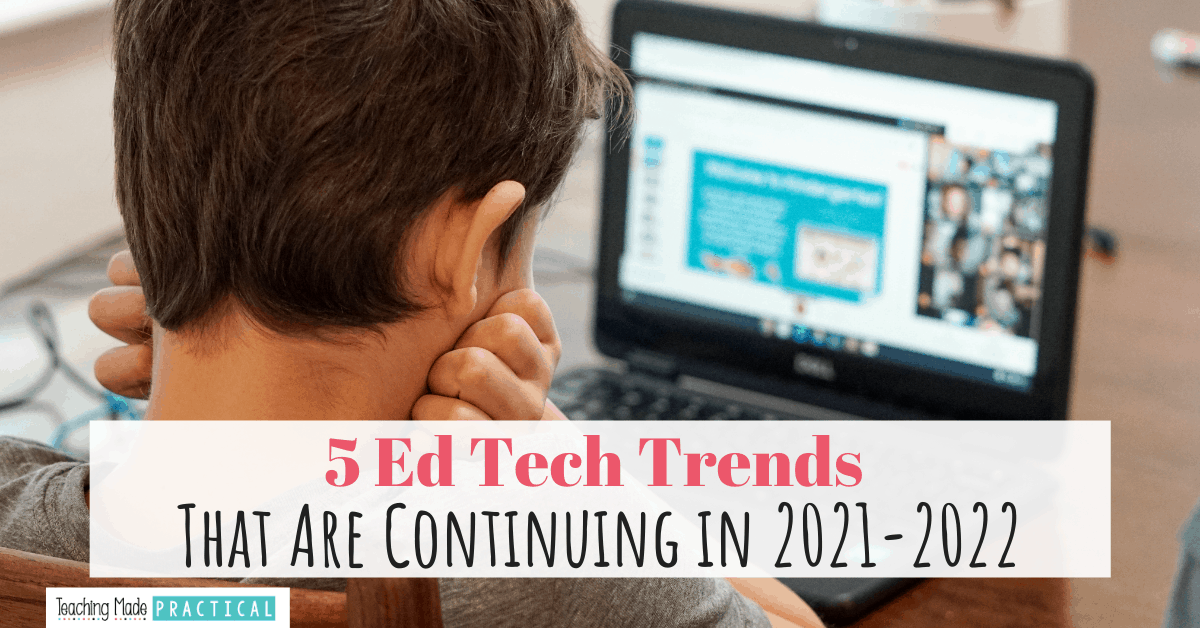
Technology has undergone many changes throughout history, making it all the more useful for different sectors of society. This is especially the case in the educational sector, where pedagogical tools have made leaps and bounds to better serve the goals of education.
According to The Boss Magazine, educational technology now makes learning more accessible, interactive, and adaptable. And because of this, learning as a whole has become easier and more convenient for students and teachers alike.
Now, following the COVID-19 pandemic, schools and universities are innovating and adopting new technological tools to serve their students through remote learning arrangements. That said, here are five Ed tech trends that will likely remain through 2021:
1. Innovative eLearning Platforms
Though eLearning has been around for a while already, its platform has been evolving as online classes become more popular. Today a class for an online degree is much more than a basic video lecture, with lessons including interactive experiences and peer interactions.
As many online degrees are 100% coursework, educational institutions are increasing student engagement through dedicated remote learning platforms. Maryville University's online cybersecurity degree features precisely this type of innovation. Their Virtual Lab program, which was distinguished by Apple for mobile innovation, allows students to experience and work on real world cybersecurity problems.
This includes case studies pulled from recent headlines to ensure that students have practical knowledge and are up-to-date with current cybersecurity issues. Apart from being innovative, an educational institution's course should be keeping up with the latest trends happening outside of the school.
2. AI - Driven Teaching Programs
More artificial intelligence (AI) programs are cropping up in industries, such as that of business and healthcare. But it's also being used in education via automated grading systems and even AI teaching assistants.
One excellent example of AI in action is the question bot, which was built by David Kellerman. First implemented in the University of New South Wales, the question bot was programmed to answer students' questions and deliver videos of past lectures. Its machine learning capabilities ensure that it gets better and better the more it's exposed to different queries.
This just goes to show the potential of AI technology in education. By automating the more basic tasks, educators will have more time to focus on the more complex aspects of teaching.
It also provides students with a more accessible means to gain information and have their questions answered.
3. Immersive Learning with VR/AR
VR/AR technology in the educational sector is often known for its fun and interactive games. However, it's also useful for other reasons. Eli Zimmerman, a journalist from the University of Maryland, writes that VR can help with a student's attention span.
It immerses students in their work and blocks out other classroom distractions. It's also a useful tool for getting students with ADD/ADHD to focus, since VR equipment fully immerses the user in its digital landscape. On the other hand, AR technology allows students to see the world in a new light.
Programs that project holograms or information onto a physical space, such as sky maps and art-based AR applications, help students gain a fresh perspective. That's why VR/AR technology is such a great tool for students to gain novel insights and ideas.
4. Gamification
With the increased call for interactive learning experiences, more educators are opting to gamify their lessons. This is useful in getting students, especially those in the K-12 sector to engage more.
A great example of this is in the previous example — VR/AR technology. However, this is also seen in other instances, most notably when teachers play digital games with their students.
Educators incorporate a variety of gaming applications in their lessons, including Kahoot!, Pictionary, and even Minecraft: Education Edition. This provides students with a more fun and enjoyable experience.
5. Learning Analytics
Lastly, much like other industries, the educational sector is beginning to see the value of data. Learning analytics allows educators to gain insights that tell them how best to teach their students.
One of the simplest ways to gain this information is to have students provide feedback via surveys. According to Cindy Koopmans, reading interest surveys are a great way to decide on what books to include in the reading list. Plus, apart from gaining insights, such surveys also assure the students that their teacher is listening and that their voice matters. Thus learning analytics helps the educator, while also engaging the students.
These are some of the most prominent Ed tech trends of 2021. Each of them improves the state of education in novel ways, providing students and educators with innovative ways to engage in their classes. With how much technology and education have progressed over the years, it's exciting to see what will come next.
Exclusively written by Abby Morgan for teachingmadepractical.com
Never Stress Over Sub Plans Again!

Make copies, find a fiction book, and you'll be ready for any emergency that comes your way!

